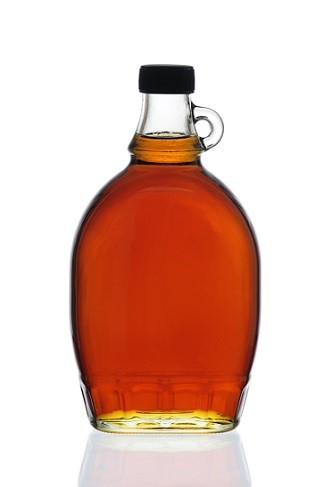
The vast majority of acne patients have a feeling, a sixth sense that sugar is involved somehow, but few realise just how well mapped out the connection is. Likewise, many are oblivious as to how easy the problem is to solve, how large improvements can be made from just modest modifications.
The subject of sugar and acne goes on forever, delving ever deeper into subplots and sidequests until you’re left totally confused. The knowledge (and therefore power) you can gain is endless, but to keep things simple, here are the 9 basic facts that an aspiring clear skin maniac has to know.
One – inflammation is key
There are very few studies directly comparing sugar consumption and acne, but the connection is plain to see: chronic inflammation, a condition behind woes as diverse as arterial weakening and retinal damage.
For example, one of the most trusted measurements of systemic inflammation in humans is C-reactive protein. This is produced by the liver in close correlation to rises in inflammatory chemicals; its exact functions are mysterious, but it’s believed to act like a scout by monitoring inflammatory molecules. Either way, this 2011 study found that higher levels of sugar consumption caused a spike in CRP of over 100%.
The real world result of this technical terminology is grimier-looking skin, and a constant rotation of angry-looking pimples which could burst at a moment’s notice. Increased inflammation results in an exaggerated immune system response to p.acnes bacteria. This results in increased swelling of the tissue surrounding a skin pore – the genesis of acne.
However, higher inflammation can also rob your skin of its precious glow, the sunny skin appearance that everyone from Sydney to the north pole craves. Subtle attacks on skin cells can create a grimy appearance, like a milder version of a 50 year smoker’s skin. High inflammation may also destroy plant antioxidants built into skin cells like beta carotene, which themselves contribute to glow.
Sugar unleashes havoc on your skin. Fortunately, all this can be rapidly reversed…
Two – oily skin and AGEs
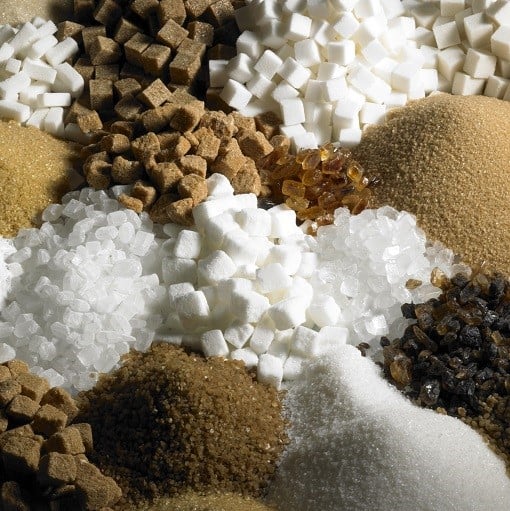
A much simpler way sugar causes acne is by spiking blood sugar. Eat potatoes, oats and other complex carbs, and you’ll acquire the necessary energy with a long, gentler blood sugar rise. Swallow a whole Easter egg at once and you’ll be hit by a sudden blood sugar spike. This applies to any candy or donuts eaten throughout the day, as white sugar is rapidly digested and has a glycemic index of 65.
Blood sugar surges accelerate sebum (your skin’s oil) production on the face, and dead skin cell turnover. These combine to clog skin pores like a sticky glue, creating the anaerobic environment that p.acnes thrives in. The more people succumb to sugar’s temptations, the oilier their skin becomes, and we’re guessing that you’ve noticed this too. These days, sugar is pouncing on innocent victims 24/7.
A more secretive pathway is AGEs, or advanced glycation end products. These are free radicals formed when sugar interacts with various molecules like lipids and amino acids, with the usual oxidising effects on the skin. Some AGEs always form in the bloodstream, but constant blood sugar spikes will crank formation up to dangerous levels. Precious antioxidants are also disabled as the body attempts to disable AGEs.
These three dangers, the sugary triumvirate of sweetness, don’t just create pimples, but add redness and “angriness” to preexisting ones.
Three – intakes have soared (like acne)
The plot of the sugar mystery (which isn’t really that mysterious) thickens when you notice charts showing that sugar consumption has soared over the last century, much like acne vulgaris has. In the pre civil war years, families just ate small quantities of jam, honey and marmalade, and enjoyed every mouthful. In the USA, the average yearly intake was 10 pounds per person in 1840, which soared to 80 pounds in 1920, and a hyperactive 110 pounds in 2000.
Today we live in an earthly paradise of dunkin donuts and candy canes which would make a 19th century farmer’s jaw drop. In Britain, sugar consumption was around 20 pounds per capita (annually) until 1850, when a continuous increase began, interrupted briefly by the world wars. Since 2000, it has often exceeded 140 pounds annually.
Another infamous villain is trans-fats, which soared from 1911 to the 1990s, but these declined sharply starting in the 2000s, as governments woke up and slammed down bans. No such decline has occurred for sugar.
One of the great developments was high fructose corn syrup’s birth. In the 1970s onwards, huge federal corn subsidies created a rush of farmers getting involved, but this led to huge piles of surplus corn. Soon, some genius invented a way to extract a sweet liquid, and HFCS was born, finding its way into all sorts of consumer products.
Four – full elimination not necessary
None of sugar’s problems appear the second a sugar crystal touches your tongue, but once you cross a certain daily threshold that the body is not adapted to – a threshold that a caveman would never be able to reach naturally. European cavemen had access to apples, berry, and honey, while tropical cavemen had tropical fruits. Our bodies can cope fine with low to moderate intakes, but not the modern sugar avalanches of 200 or even 300 grams daily.
The upside however, is that you don’t have to eliminate sugar completely to acquire great acne benefits. You don’t need to hunt down every source and get below 50 grams daily, like some extreme voices recommend. Your life doesn’t have to become a punishing regime of severe discipline and misery.
The average Westerner’s sugar intake is so high today that even moderate reductions will have great benefits. Banishing just a few cookies and a donut per day could be enough to extinguish the fires of your acne. It depends on individual circumstances, as some people’s acne may be more connected to hormones instead.
Five – it’s everywhere
When trying to reduce sugar, a chocolate bar or donut is the first thing you’d throw out the window, possibly hitting the postman in the face. They’re the obvious sugary items you have to banish, to eliminate 20 grams instantly. But there’s also many smaller sources, which are insignificant individually, but combine to create a large total. Sugar commonly lurks in unexpected savoury items, such as canned soup, tomato ketchup, brown bread, breaded fish, and barbeque sauce.
Most of these don’t require sugar, and arguably taste worse with a couple of grams added. But that doesn’t stop food manufacturers sprinkling in a little, hoping to gain an edge. People often get used to the taste of unnecessary added sugar over time. The situation varies by region – many outsiders consider US bread to be strangely sweet, while Americans themselves are used to it.
Other surprising sources include canned vegetables, peanut butter and salad dressing. Such foods are another reason that an acne patient’s sugar intake can become unnecessarily high. The information is freely available on labels, e.g. 4 grams of sugar in a can of baked beans. But people simply don’t expect such food to contain added sugar, and grab them off the shelf thinking they’re safely savoury.
Six – addiction is real
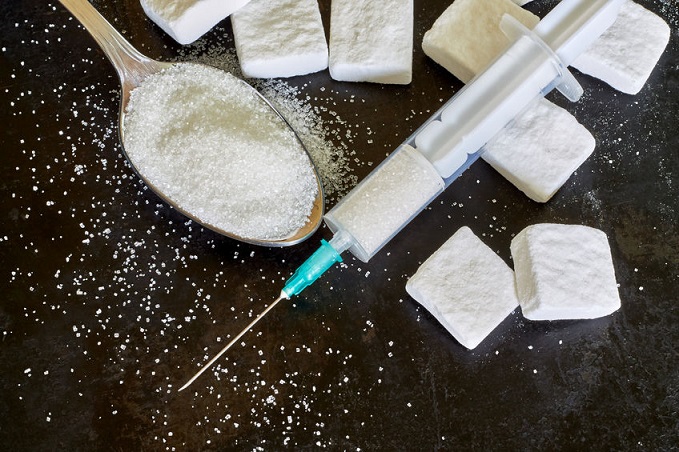
A cheap sugary chocolate bar isn’t that pleasurable. You probably enjoyed a bowl of strawberries yesterday far more, yet you find yourself reaching for the chocolate anyway. Sugar wants you to eat it; it loves the fact that people are unable to resist.
Food manufacturers love it too, and its addictive nature is why companies continue to pour in ever greater quantities of the stuff. Being so cheap and available, it makes more sense to boost profit margins with sugar, rather than higher quality cocoa beans, higher strawberry percentages, finer cinnamon, etc.
Though it’s far from meth or fentanyl, there’s no doubt that added sugar can get its tentacles into your brain. The average acne patient or donut fiend has known this for decades. The first physiological mechanisms were discovered in a 2005 study on rats, where feeding them sucrose increased their intracellular dopamine levels to 130% of baseline.
As the weeks wore on, the rats gradually increased their sucrose consumption from 37ml to 112ml, hinting that dopamine receptors were becoming less receptive, requiring more sugar to hit the dopamine high. According to one of the coolest studies, the brain may even generate opioids after sugar consumption. Injecting rats with the opioid-counteracting medication naxalone caused symptoms in sugar-feeding rats like teeth chattering and forepaw tremor.
Seven – be careful with sugar alternatives
With the horrors of sugar being known to all by now, there’s been an explosion of alternative sweeteners promising the world to their followers. Some gushing articles give the impression that these can be used limitlessly, but no such thing exists, even if several sweeteners are healthier than basic white sugar crystals.
Honey is the classic. It’s packed with unique bee compounds like methylgyloxal, bee-defensin-1, antioxidants and trace minerals. Its glycemic index is lower than real sugar. Nevertheless, raw honey still consists of 80% sugar, and will rot your teeth and face if you constantly overindulge. Zero calorie sweeteners also have a dark side. The selling point is all sweetness and zero sugar, but too much can disrupt your stress hormones and insulin responses.
If anything sounds too good to be true in the sugar debate, it probably is. That said, I strongly recommend raw honey for your recipe (and topical) needs, in moderate amounts. The highest quality widely available brand is Y.S. Eco bee farms. Always apply the same rules to raw honey, or brown sugar or coconut sugar, that you would to regular sugar.
Eight – Improvements can be rapid
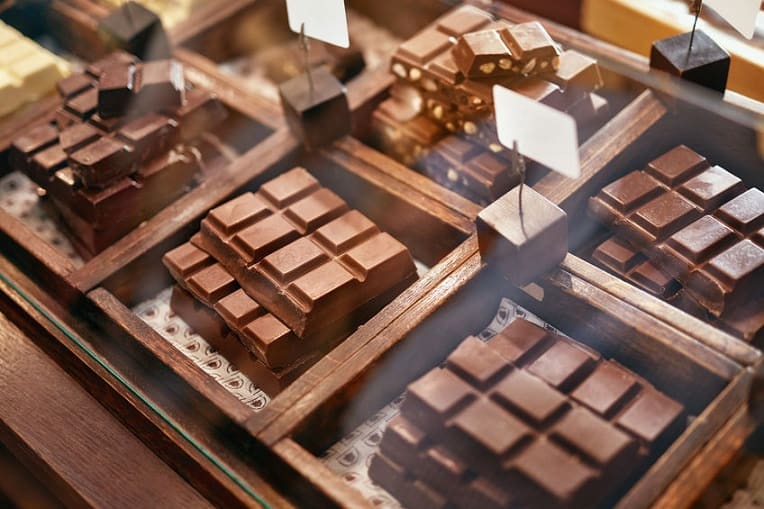
The best thing is that once you’ve identified and honed in on the sugar problem, benefits can be extremely rapid. Lowering oily skin requires patience, as the pores must unclog and p.acnes bacteria must gradually wither and die as the roof of their home caves in.
By slashing sugar though, you can extinguish much of inflammation’s fires within days. The largest pimples clinging stubbornly to your face will go first, losing their “anger”, becoming a bit of a joke. New pimples will be less severe, and the rows and columns of smaller pimples which create a grimy appearance will go extinct. If takes little time for inflammatory markers like C-reactive protein, interleukin-6, IL-8, TNF-a and neutrophils to fall in the bloodstream. There’s no complex process before this manifests on your face.
Slashing sugar is one of the most rapidly acting of all clear skin buttons. As you closely inspect yourself in the mirror, the benefits could manifest within 2 days, while to random friends who glance at you less closely, they could be noticeable within 1 week.
Nine – certain foods can shield you
Another happy fact is that sugar doesn’t exist in an isolated vacuum. It isn’t a case of 200 grams of sugar equals pizza face, and 100 grams equals a couple of small pimples. Sugar’s various dangers can be counteracted with other dietary strategies (or worsened with mistakes).
Sure, if you eat over 300 grams daily there’s almost no saving yourself, and there’s no choice other than to ruthlessly outlaw several foods permanently. But at 120 grams daily, you can easily add a serving of strawberries and broccoli, and a zinc supplement, and counteract the insidious AGEs fizzing away at healthy skin cells. 120 grams could consist of natural plant sources, plus a small handful of treats like a sugary fruit yoghurt and slab of milk chocolate. This ties in with what we said earlier, that full hardcore elimination protocols aren’t always necessary.
Speaking of fruits, they’re rich in natural sugars which you need to control, but not too strictly. The quantities vary from 5 grams per 100 grams in strawberries to 15 grams in grapes, but fruits contain some of the strongest antioxidants and anti-inflammatory compounds in nature. Stick to 2-4 fruit servings daily, and you’ll hit the clear skin sweet spot (don’t listen to fruitarian diet preachers).
Conclusion
There’s no chance of any western government taking action on sugar any time soon. Whether you agree or disagree, there won’t be any laws mandating that food companies slash their sugar quantities by 30%, and even modest laws like banning candy bars from being sold near supermarket checkouts (to tempt people at the last second) are slow to arrive.
This means that it’s all down to you. The power to slash sugar, and your pimple count, lies entirely in your hands. So too will the feeling of satisfaction when you eventually achieve success.
Advanced knowledge: the full history of sugar and the truth about sugar addiction.
Thanks for reading!

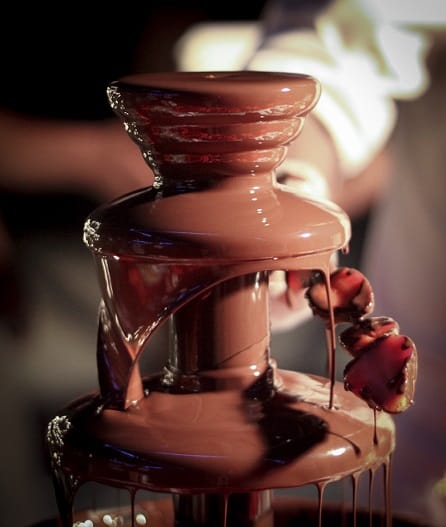
What do you think of xylitol as an alternative sweetener? It is supposedly good for one’s teeth and micriobiome and can even kill harmful mouth bacteria apparently.
It’s definitely a decent alternative and is proven to kill some of the infamous bacteria behind tooth decay such as Streptococcus mutans. The only problem is that xylitol is a FODMAP and many people are unable to cope with them digestively speaking. So it depends upon your unique bodily circumstances. Some cope perfectly well with FODMAPs, others end up having to follow low FODMAP dietary protocols.
Right now I’m simply swishing it around the mouth for three minutes or so much like the ayurvedic coconut oil pulling method to hopefully kill some of the harmful bacteria in there. For cooking and baking I still mostly use honey and brown sugar.
Sounds like a good plan.
According to Dr Mercola drinking warm sugar water throughout the day can provide the mitochondria with enough glucose, ie a clean fuel source of cellular energy, to rebuild their cell membranes which he says could help heal a leaky gut. Not sure if I should try this method. I’ve tried removing glutenous grains and adding probiotics and prebiotics/quercetin before but did not see any real results.